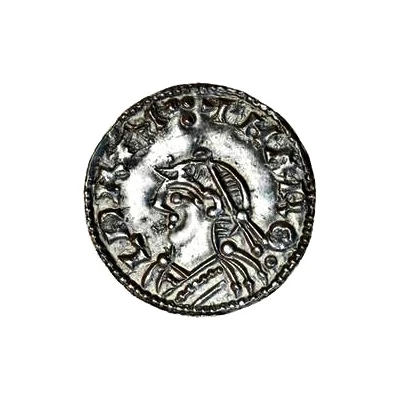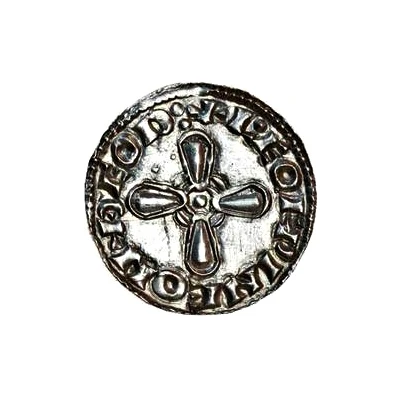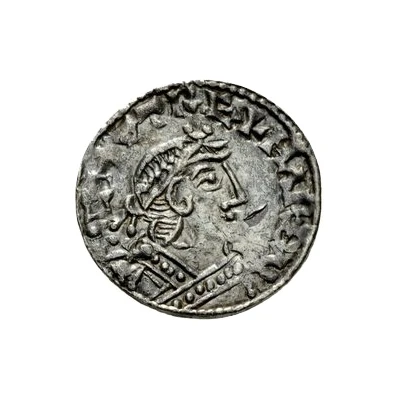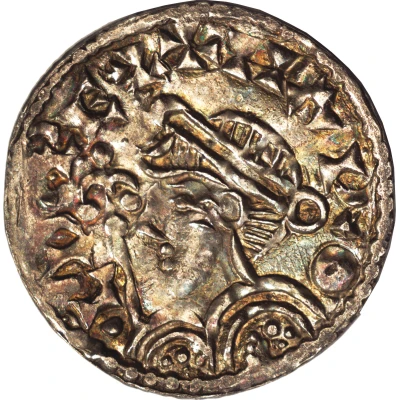


© Spink and Son
Penny - Harold I Jewel Cross type ND
| Silver | 0.98 g | 17 mm |
| Issuer | England (United Kingdom, British Overseas Territories and Crown Dependencies) |
|---|---|
| King | Harold I (1035-1040) |
| Type | Standard circulation coin |
| Years | 1036-1038 |
| Value | 1 Penny |
| Currency | Penny (924-1158) |
| Composition | Silver |
| Weight | 0.98 g |
| Diameter | 17 mm |
| Shape | Round (irregular) |
| Technique | Hammered |
| Demonetized | Yes |
| Updated | 2024-10-08 |
| Numista | N#55906 |
|---|---|
| Rarity index | 94% |
Reverse
Cross composed of four ovals united at base by two concentric circles enclosing a pellet, moneyer/mintname around.
Script: Latin
Lettering: +LEOFǷINE ON ÐEOD
Translation: Leofvine of Thetford
Comment
Harold I Harefoot (1035-40), Jewel cross type, Thetford mint, Leofwine moneyer; BMC I; North 802Interesting fact
The Jewel Cross type Penny, which features a cross with ornate jewels at the ends, was introduced during the reign of King Harold I (also known as Harold Godwinson) in 1036. It was a significant departure from the previous coinage designs, which featured a simple cross or a portrait of the king. The Jewel Cross design was meant to symbolize the king's power and wealth, and it became a distinctive feature of English coinage during this period.



